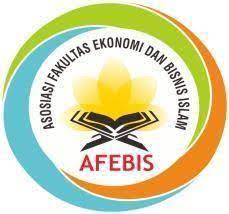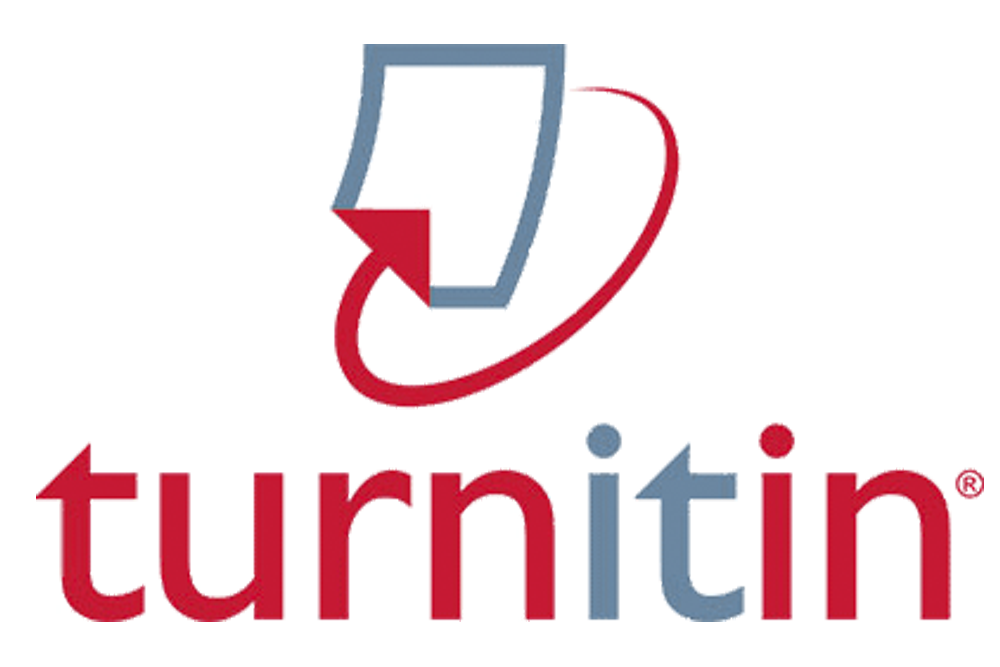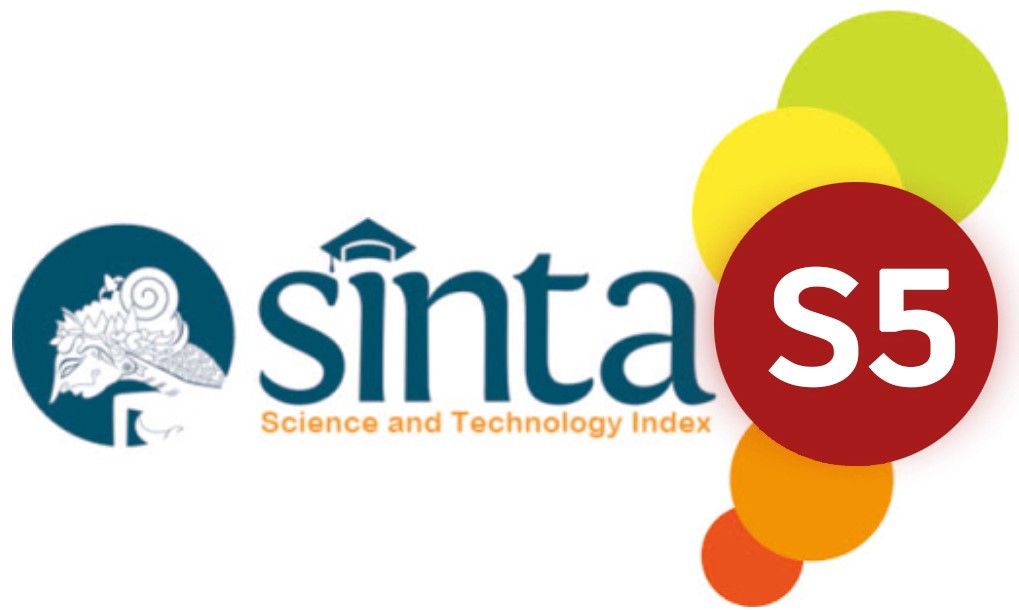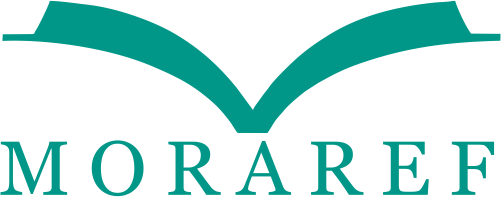Effect of Transformational and Transactional leadership Style on Employees’ Performance in Lebanese Universities
Abstract
The effectiveness of individual employee’ performance depends on the leader/supervisor. Effective leader can enhance the individual employee performance through proper leadership style and retain high performance and talent employees within the company. The behavior of leader is very importance to improve job performance and retain skillful employees for longer period in the organization. This study aims to investigate the effect of transformational leadership and transactional leadership styles on employees’ performance in Lebanese Universities. Three main variables consist in conceptual framework. They are independent variables (transformational leadership style, transactional leadership style and dependent variable (employee performance). A sample of 400 respondents has been randomly selected from top four universities in Lebanon. Sample was selected by using simple random method and primary data was collected through structured questionnaires. Data analysis was conducted by using Statistical Package for Social Sciences (SPSS 23.0) and Smart-PLS 3.0. Results showed that both transformational leadership and transactional leadership styles have the significant effect on employees, performance in Lebanese universities. The outcomes of this study offered substantial empirical support to the research framework from a theoretical and managerial perspective.
Keywords
Full Text:
PDFReferences
Adair, J. (2003). Not Bosses but Leaders: How to Lead the Way to Success (3rd ed.). London: Kogan Page.
Afthanorhan, W. M. A. B. W., & Ahmad, S. (2013). Modelling the Multimediator on Motivation among Youth In Higher Education Institution Towards Volunteerism Program. Mathematical Theory and Modeling, 3(7), 64-70.
Al Khajeh, E. H. (2018). Impact of leadership styles on organizational performance. Journal of Human Resources Management Research, 2018(2018), 1-10.
Aldoory, L., & Toth, E. (2004). Leadership and gender in public relations: Perceived effectiveness of transformational and transactional leadership styles. Journal of Public Relations Research, 16(2), 157–183..
Armstrong, M. (2012). Armstrong’s Handbook of Management and Leadership: Developing Effective People Skills for Better Leadership and Management (3rd ed.). London: Kogan Page.
Avolio, B. J. & Bass, B. M. (2009). Multifactor Leadership Questionnaire. Manual and sampler set. (3rd Ed.) Redwood City, CA: Mind Garden.
Aydin, A., Sarier, Y., & Uysal, S. (2013). The effect of school principals’ leadership styles on teachers’ organizational commitment and job satisfaction. Educational Sciences: Theory and Practice, 13(2), 806-811.
Bakker A.B., Demerouti E. (2008). Towards a model of emotional intelligence. Career Dev. Int.;13(3):209–223.
Bartlett, J. E., Kotrlik, J. W., & Higgins, C. C. (2001). Organizational Research: Determining Appropriate Sample Size in Research. Published in Information Technology, Learning and Performance Journal, 19(1), 43-50.
Bass, B. M., & Avolio, B. J. (2000). MLQ Multifactor Leadership Questionnaire sample set: Technical report, leaders form, rater form, and scoring key for MLQ Form 5x-Short (2nd Ed.). Redwood City, CA: Mind Garden.
Batista-Taran L.C., Shuck M.B., Gutierrez C.C., Baralt S. (2009). The role of leadership style in employee engagement. In: Plakhotnik M.S., Nielsen S.M., Pane D.M.,editors. Proceedings of the Eighth Annual College of Education & GSN Research Conference. Florida International University; Miami: pp. 15– 20.http://coeweb.fiu.edu/research_conference/
Becker, W., Dale, W., Pakur, E. and Grove, J. (2010). Forensic Science in Transition: Critical Leadership Challenges. United States of America: Taylor and Francis.
Bichi, M.Y (2004). Introduction to research method and statistics. Kano: Debis-co press and Publishing Company.
Burns, J. M. (1978). Leadership, New York. Harper & Row, Onursal Arkan.
Carasco-Saul M., Kim W., Kim T. (2015). Leadership and employee engagement proposing research agendas through a review of literature. Hum. Resour. Dev. Rev. 14(1):38–63.
Chan, S. C., & Mak, W. M. (2014). Transformational leadership, pride in being a follower of the leader and organizational commitment. Leadership & Organization Development Journal.
Chin, W. W. (1998a). Commentary: Issues and Opinion on Structural Equation Modeling. MIS Quarterly, 22(1), 7-16.
Cochran, W.G. (1977). Sampling technique (3rd edition). John Wiley and Sons. New York
Dillman, D. A. (2000). Mail and internet surveys: The tailored design method (Vol. 2). New York: Wiley.
Dillman, D. A., Phelps, G., Tortora, R., Swift, K., Kohrell, J., Berck, J., & Messer, B. L. (2009). Response rate and measurement differences in mixed-mode surveys using mail, telephone, interactive voice response (IVR) and the Internet. Social Science Research, 38(1), 1 - 18.
Duarte, P. A. O., & Raposo, M. L. B. (2010). A PLS model to study brand preference: An application to the mobile phone market. In Handbook of partial least squares: Concepts, Methods and Applications, 449-485.
Falk, R. F., & Miller, N. B. (1992). A Primer for Soft Modeling. University of Akron Press.
Fornell, C., & Larcker, D. F. (1981). Structural equation models with unobservable variables and measurement error: Algebra and statistics. Journal of Marketing Research, 18(3), 382-388.
Forsyth, D. R. (2017). Group dynamics (2nd Ed.). California: Brooks/Cole Publishing Company.
Gelo, O., Braakmann, D., & Benetka, G. (2008). Quantitative and qualitative research: Beyond the debate. Integrative Psychological and Behavioral Science, 42(3), 266-290.
Gerlach, R. W., Kowalski, B. R., & Wold, H. 0. (1979). Partial least squares path modelling with latent variables (No. 15). Washington Univ Seattle Lab For Chemometrics.
Goleman, D. (2018). What makes a leader? Harvard Business Review, 76(6), 93–103.
Goleman, D., & Boyatzis, R. (2019). Emotional competence inventory 360 (ECI): Technical manual. Retrieved May 10, 2004 from http://www.eiconsortium.org/measures/eci_360.htm
Goleman, D., Boyatzis, R. E., & McKee, A. (2019). Primal leadership: Realizing the power of emotional intelligence. Boston: Harvard Business School.
Groves, K. S. (2014). Examining leader-follower congruence of social responsibility values in transformational leadership. Journal of Leadership & Organizational Studies, 21, 227- 243.
Hair, Hult, G., Ringle, C., & Sarstedt, M. (2014). A Primer on Partial Least Squares Structural Equation Modeling. Long Range Planning 46 (1st Edtn) Singapore: Sage.
Hair, J. F., Black, B., Babin, B., Anderson, R. E., & Tatham, R. L. (2010). Multivariate Data Analysis. A global perspective (Vol. 7).
Hair, J. F., Black, W. C., Babin, B. J., & Anderson, R. E. (2010). Multivariate Data Analysis (7th ed.). Upper Saddle River, New Jersey: Prentice Hall.
Hair, J. F., Hult, G. T. M., Ringle, C. M., & Sarstedt, M. (2017). A Primer on Partial Least Squares Structural Equation Modeling (PLS-SEM) (2nd ed.). Thousand Oaks, CA: Sage.
Hair, J. F., Risher, J. J., Sarstedt, M and Ringle, C. M., (2019). When to use and how to report the results of PLS-SEM, European Business Review Vol. 31 No. 1, 2019 pp. 2-24 © Emerald Publishing Limited 0955-534X DOI 10.1108/EBR-11-2018-0203.
Haque, A., Faizan, R., & Cockrill, A. (2017). The Relationship between Female Representation at Strategic Level and Firm’s Competitiveness: Evidences from Cargo Logistic Firms of Pakistan and Canada. Polish Journal of Management Studies, 15, 69-81. https://doi.org/10.17512/pjms.2017.15.2.07.
Hays, R. D., Morales, L. S., & Reise, S. P. (2000). Item response theory and health outcomes measurement in the 21st century. Medical Care, 38, II28–II42.
Henseler, J., Ringle, C. M., & Sinkovics, R. R. (2009). The use of partial least squares path modeling in international marketing. Advances in International Marketing, 20, 277-319.
Igbaekemen, G. O., & Odivwri, J. E. (2015). Impact of Leadership Style on Organization Performance: A Critical Literature Review. Arabian Journal of Business and Management Review, 5, 1-7.
Jin, Y. (2010). Emotional leadership as a key dimension of public relations leadership: National survey of public relations leaders. Journal of Public Relations Research, 22(2), 159-181.
Jyoti, J., & Bhau, S. (2015). Impact of transformational leadership on job performance: Mediating role of leader-member exchange and relational identification. SAGE Open, 1-13.
Khan M.J., Aslam N., Riaz M.N. (2012). Leadership styles as predictors of innovative work behavior. Pak. J. Clin. Psychol. 9(2):17–22.
Khan, A., & Adnan, N. (2014). Impact of leadership styles on organizational performance. International Journal of Management Sciences, 2(11), 501-515.
Khan, S., Asghar, M., & Zaheer, A. (2014). Influence of Leadership Style on Employee Job Satisfaction and Firm Financial Performance: A Study of Banking Sector in Islamabad Pakistan. Actual Problems in Economics, 155, 374-384.
Khan, Z. A., Khan, A.N., & Khan, I.D. (2016). Leadership theories and styles: A literature review. Journal of Resources Development and Management, 16(1), 1-7.
Kim W. The Pennsylvania State University; 2014. An Examination of Emotional intelligence in Selected Major Organizations in Korea: its Role as a Mediator between Antecedents and Consequences. Dissertation.
Klein, A. S., Cooke, R. A., & Wallis, J. (2013). The Impact of Leadership Styles on Organizational Culture and Firm Effectiveness: An Empirical Study. Journal of Management & Organization, 19, 241-254. https://doi.org/10.1017/jmo.2013.34
Krejcie, R. V., & Morgan, D. W. (1970). Determining sample size for research activities. Educ Psycho1 Meas, 30(3), 607- 10.
Longe, O. J. (2014). Leadership style paradigm shift and organizational performance: A case of the Nigerian Cement Industry. African Research Review, 8(4), 68-83.
Luthan, F. (2011). Organizational behavior: An evidence-based approach. Boston: McGraw- Hill Press.
Malhotra, N. K. (2010). Marketing research: An applied orientation, 5th ed. Pearson Education India. Malhotra.
McDaniel, M. A., Roediger, H. L., & McDermott, K. B. (2007). Generalizing test-enhanced learning from the laboratory to the classroom. Psychonomic bulletin & review, 14(2), 200-206.
McKee, A. (2014). Management: a focus on leaders. New Jersey: Pearson Education Inc.
Mohammad, I., Chowdhury, S. R., & Sanju, N. L. (2017). Leadership styles followed in the banking industry of Bangladesh: A case study of some selected banks and financial institutions. American J. of Theoretical and Applied Business, 3(3), 36-49.
Mullins L. (2004). Management and organizational behavior, Pearson Higher Education FT Prentice Hall.
Mullins L. J., (2000). Management and Organizational Behavior, Pitman Publishers, London
Mullins, L. J. (2000). Management and Organisational Behavior. London: Pitman Publishers.
Park Y.K., Song J.H., Yoon S.W., Kim J. (2013). Learning organization and innovative behavior: the mediating effect of emotional intelligence. Eur. J. Train
Puni, A., Mohammed, I., & Asamoah, E. (2018). Transformational leadership and job satisfaction: The moderating effect of contingent reward. Leadership & Organisation Development Journal, 39(4), 522-537.
Puni, A., Ofei, S. B., & Okoe, A. (2014). The Effect of Leadership Styles on Firm Performance in Ghana. International Journal of Marketing Studies, 6, 177-185
Saks A.M. (2006). Antecedents and consequences of employee engagement. J. Manag. Psychol.21(7):600–619.
Salanova M., Lorente L., Chambel M.T., Martinez I.M. (2011). Linking transformational leadership to nurses’ extra-role performance: the mediating role of self-efficacy and emotional intelligence. J. Adv. Nurs. ;67(10):2256–2266
Salanova M., Schaufeli W.B. (2008). A cross-national study of emotional intelligence as a mediator between job resources and proactive behavior. Int. J. Hum. Resour. Manag. 19(1):116–131.
Schaufeli W.B., Bakker A.B. (2004). Job demands, job resources, and their relationship with burnout and engagement: a multi-sample study. J. Organ. Behav. 25(3):293–315.
Schaufeli W.B., Bakker A.B. (2010). Defining and measuring emotional intelligence: bringing clarity to the concept. In: Bakker A.B., Leiter M.P., editors. Emotional intelligence: A Handbook of Essential Theory and Research. Psychology Press; New York, NY: pp. 10–24.
Sekaran, U & Bougie, R. J. (2016). Research methods for business: A skill building approach. John Wiley & Sons.
Sekaran, U. & Bougie, R. (2010). Research methods for business: A skill building approach (5th ed.). John Willey & Sons Ltd.
Sekaran, U. (2000). Research methods for business: A skill building approach. John Wiley & Sons, Inc.
Silva, M. S., Smith, W. T., & Bammer, G. (2002). Telephone reminders are a cost effective way to improve responses in postal health surveys. Journal of epidemiology and community health, 56(2), 115- 118.
Sofi, M.A., & Devanadhen, D.K. (2015). Impact of leadership styles on organizational performance: An empirical assessment of the banking sector in Jammu and Kashmir. IOSR Journal of Business and Management, 17(8), 31-45.
Song J.,H., Kolb J.A., Lee U.H., Kim H.K. (2012). Role of transformational leadership in effective organizational knowledge creation practices: mediating effects of employees’ emotional intelligence. Human Dev. Q. 23(1):65–101.
Sun, W., Xu, A., & Shang, Y. (2014). Transformational leadership, team climate, and team performance within the NPD team: Evidence from China. Asia Pacific Journal of Management, 31, 127-147.
Tabachnich, B. G., & Fidel, L. S. (2007). Using Multivariate statistics (5th Ed), Boston: Pearson Education Limited.
Tabachnick, B. G., & Fidell, L. S. (2001). Using Multivariate Statistics. (2nd ed.). Boston: Allyn and Bacon,
Temme, D., Kreis, H., & Hildebrandt, L. (2006). PLS path modeling: A software reviewwo. 2006, 084). SFB discussion paper.
Traina, S. B., MacLean, C. H., Park, G. S., & Kahn, K. L. (2005). Telephone reminder calls increased response rates to mailed study consent forms. Journal of clinical epidemiology, 58(7), 743-746.
Wang, F.-J., Shieh, C., & Tang, M. (2010). Effect of Leadership Style on Organizational Performance as Viewed from Human Resources Management Strategy. African Journal of Business Management, 14, 3924-3936.
Xanthopoulou D., Bakker A.B., Demerouti E., Schaufeli W.B. (2009). Emotional intelligence and financial returns: a diary study on the role of job and personal resources. J. Occup. Organ. Psychol.;82(1):183–200.
Xenikou, A. (2017). Transformational Leadership, Transactional Contingent Reward, and Organizational Identification: The Mediating Effect of Perceived Innovation and Goal Culture Orientations. Frontiers in Psychology, 8, 1754. https://doi.org/10.3389/fpsyg.2017.01754.
Yukl, G. (2006). Leadership in Organizations (6th Ed.). New Jersey: Pearson- Prentice.
Zikmund W., G. (2003). Business research methods. Mason: Thomson South-Western.
Zwingmann, I., Wegge, J., Wolf, S., Rudolf, M., Schmidt, M., & Richter, P. (2014). Is transformational leadership healthy for employees? A multilevel analysis in 16 nations. German Journal of Research in Human Resource Management, 28(1-2), 24.
DOI: http://dx.doi.org/10.24042/revenue.v4i2.18205
Refbacks
- There are currently no refbacks.
Manajemen Bisnis Syariah UIN Raden Intan Lampung








